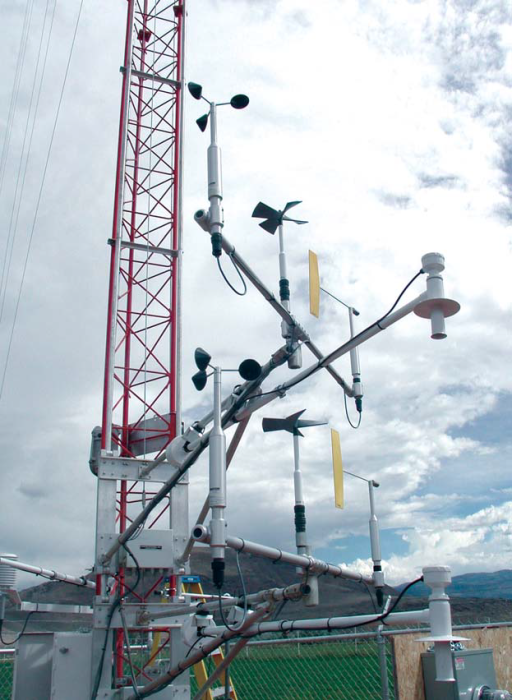
The past few years have seen a scramble within the power industry to use more of Utah's natural resources for electric power production. To secure the required permits to construct proposed facilities, power companies must model emissions from the proposed plant site using current meteorological and air quality data that are representative of onsite conditions. Meteorological Solutions, Inc. (MSI) installed and operated meteorological and air quality monitoring systems to characterize baseline conditions at proposed or existing power plant locations in Utah. A minimum of one year of valid data is required, and strict quality control measures are implemented to assure high data recovery. Data are collected and stored as 15-minute averages computed from 1-second values using a Campbell Scientific CR23X data logger. A reliable landline or cellular telephone connection allows frequent interrogation of the installed data loggers to retrieve data and confirm data validity. Campbell Scientific's Data Logger Software was used for data retrieval, real-time display of numeric values, and data logger program modifications.
For all of these applications, meteorological sensors were either mounted on 50- or 100-meter towers. Wind and temperature sensors were boom-mounted on electrically powered instrument lift carriages at 100 or 50 metres and at 10 metres. This feature facilitated sensor access for periodic maintenance and semi-annual performance audits and eliminated the need to climb the towers. The tower sensor configuration included Met One 010C/020C sensors to measure wind speed and direction at 10 and 50 or 100 metres and R.M. Young RTD temperature probes with motor-aspirated shields at 2-, 10-, and 50- or 100-meter levels. This arrangement allowed for a variety of delta temperature calculations to satisfy different dispersion model input requirements. A Li-Cor LI200X measured solar radiation and a Vaisala CS105 measured barometric pressure.
Quality control for atmospheric gas sampling equipment may include periodic zero, span and precision checks. The checks can be activated by the CR23X control ports connected to an A21REL-12 relay driver and interfaced with the gas analyzer calibration system. Gas analyzers and calibrators with RS-232 connections to their microprocessors allow remote access via modem to their systems. At one air quality monitoring station, MSI used a code-activated switch for selectable telephone access of not only the CR23X but the gas monitoring equipment as well. This feature allowed real-time communication with the analyzer to view diagnostics and troubleshoot problems remotely.
Case Study Summary
Application
Recording baseline air quality and meteorological data at proposed power plant sitesLocation
Utah, USAProducts Used
CR23X LI200X-L CS106 CS105 HMP45C-L Q7.1-L A21REL-12Contributors
William J. Hauze, Meteorological Solutions, Inc.Participating Organizations
Various energy concernsMeasured Parameters
Horizontal wind speed/direction, vertical wind speed, sigma theta of the wind direction, air temperature, delta temperature, solar radiation, net radiation, relative humidity, barometric pressure, precipitation, sulfur dioxide, PM10, PM2.5Controlled Devices
Atmospheric gas samplersView the PDF